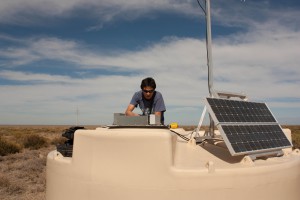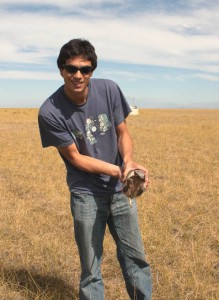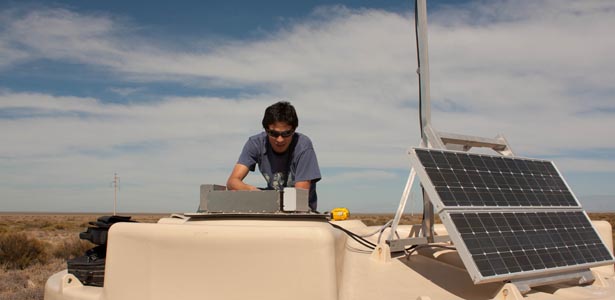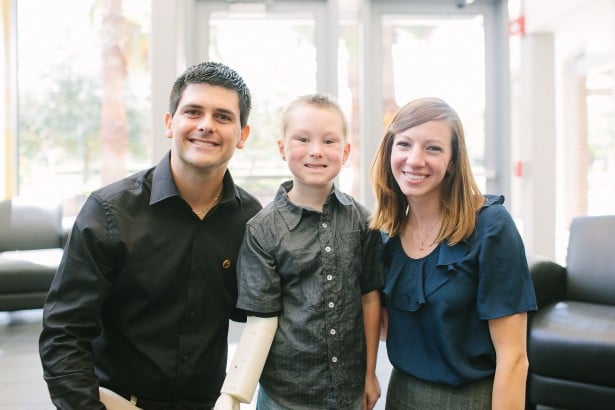
Zigfried Hampel-Arias, 2009-2010, Argentina, working on a detector element of the Pierre Auger Observatory
As a physicist, I study cosmic rays—high-energy particles that zip around the universe. If scientists are lucky, these cosmic rays land on detectors set up on the ground. For my Fulbright grant, I worked at the Pierre Auger Observatory, a detector located in Mendoza, Argentina. By analyzing the information gained from the detector, physicists can better understand the origins and fate of our universe.
My Fulbright research focused on how the observatory was aging and its potential impact on the search for the elusive sources of cosmic rays. Initially, I thought that the project would be fairly straightforward, but that was not to be the case. After consulting with my Argentine colleagues, I realized that I had to write my own computer simulation program to solve the problem. I had to simplify the physics involved and to incorporate only those interactions that were essential to the problem. Another surprise was that I have been able to use the simulation I wrote during my Fulbright for my current doctoral research in physics at the University of Wisconsin-Madison. This was not what I was expecting, but early into my grant period, I realized that unexpected experiences are an integral part of the Fulbright experience.
My best memories from my Fulbright often occurred unexpectedly. One of my favorite random experiences occurred on a drive to the observatory. One night, I saw a TV special that mentioned a small, armadillo-like creature that lives in the Mendoza region. Known as the piche, this animal is endangered and rarely seen in the wild. Even the TV crew barely got a glimpse of one. The next day, I asked our driver if he’d seen any piches before. The next thing I knew, he had jumped out of the truck, sprinted off into the grassland, and a few moments later, returned with a cute, curled-up piche in his hands! He proudly handed it to me for a photo op.

Zigfried Hampel-Arias, 2009-2010, Argentina, holding a piche, the rare dwarf armadillo from the grasslands of Mendoza, Argentina
Another chance encounter has had lasting effects on my physics career. During a physics summer school held at my host institution, I became good friends with some students from Argentina, Mexico, and the United States. We went together to a presentation on an exciting new experiment in Mexico. Similar to the Pierre Auger Observatory, the High Altitude Water Cerenkov Observatory (HAWC) was a new project in search of cosmic ray origins. After the summer school, we stayed in touch about our future career plans. Now, four of the U.S. students (including myself) are conducting doctoral research on HAWC, and two of the Latin American students are applying for graduate school here in the States, planning to work on HAWC.
These chance experiences made me realize that it is the random, fortuitous moments that truly embody my Fulbright experience. Even my proposed research didn’t play out exactly as I expected. A Fulbright grant gives you the opportunity to have these unexpected experiences, which is what makes it so valuable and unique.
Advice for Applicants:
- Take advantage of resources and contacts. This is especially true when getting a letter of affiliation. After sending enough emails, you’ll eventually find the right person with whom you can work, or at least have as a point of contact.
- Avoid jargon. Especially for scientists, your great ideas aren’t going to get noticed if you can’t communicate them effectively. Keep things simple!
- Finally, if you do receive a Fulbright, be prepared to encounter unforeseen obstacles and setbacks to your research. Embrace them and adjust accordingly. That’s usually where the magic happens!



1 Comment
This is the best written Fulbright experience post! I just joined and I’m experiencing exactly those same random, chance encounters you talk about!
Thumbs up!